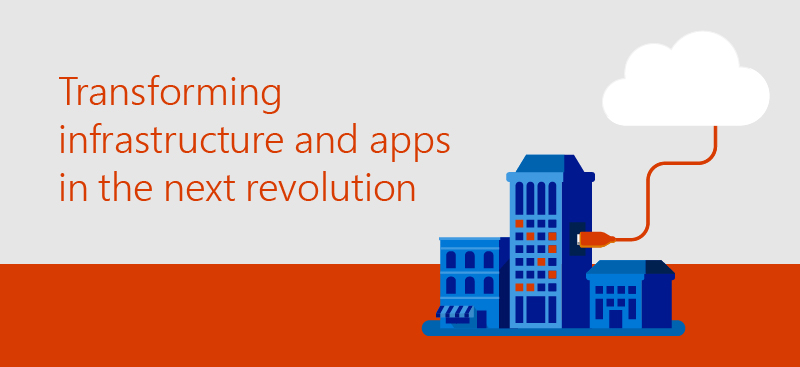Transforming infrastructure and apps in the next revolution

Previously, we've covered the modern workplace, business applications, and data & AI. In this final blog of the series, we look at how IT infrastructure and apps can be transformed to optimise business processes.
In the fourth industrial revolution (4IR), the cloud has the power to turn the IT department into a revenue centre, rather than a cost centre. In other words, cloud can reduce the expense and complexity of IT management for your customers.
First, let's consider whether your customer's experience of the cloud is up to speed. Do they still think of it as somewhere to store photos, stream music and check their email when they're out and about? If so, it's high time you had a cloud conversation. Advise them on the broader cloud capability. Convince them that their workloads will be lighter and things will run more smoothly due to the cloud's flexibility. They need to know that labour and operational cost reductions can be easily achieved. It's in your interest to educate them.
As with all topics covered in this series, this story presents huge opportunities for Microsoft partners. According to 451 Research, 41% of all enterprise workloads are currently running in some type of public or private cloud. By mid-next year this is expected to rise to 60%. While IDC predict cloud computing spend will increase from $67B in 2015 to $162B in 2020.
Of course, this is having a huge impact on CIOs everywhere. Gartner puts it best:
"As digitisation and innovation put more emphasis on the information rather than the technology in 'IT', the CIO's role is transforming from delivery executive to business executive - from controlling costs and re-engineering processes to driving revenue and exploiting data."
What's your role?
Think of yourself as a cloud evangelist. Your mission is to assure customers that their data can be securely migrated to the cloud. Cloud migration should be the first step on their digital transformation journey. The bottom line is: their data and workloads need to be in the cloud. This will make their systems easily accessible, scalable and interactive.
Then you'll need to work closely with your clients. Help them transform their infrastructure and apps to get ahead in their industries. To start with, you can assist them in creating a customer-centric cloud strategy. After that, you'll be leant upon to show them how to architect their apps in a way that supports their vision.
But before you can begin to help your customers, you'll need to expand your own cloud competencies and, if you don't already operate in this space, build a cloud practice.
How can we help?
Microsoft has a wealth of offerings and resources to help you take advantage of the infrastructure and apps opportunities in 4IR.
For instance, the Microsoft Application Platform is a comprehensive and integrated set of tools and technologies. It's designed to help your customers to get more value from their app portfolios. This is particularly important because applications are the bridge between their business processes and IT department.
Then there's Microsoft Azure. Our trusted end-to-end cloud offering is designed to help your customers turn ideas into solutions faster. A new range of analytics capabilities in Azure bring together infrastructure and app monitoring. It's called Azure Monitor and includes new log analytics, metrics exploration, app performance monitoring and failure investigations.
Next steps
We hope you've enjoyed reading our series of blogs on the fourth industrial revolution. You can download our Cloud Infrastructure & Management Playbook and find out about Azure here.